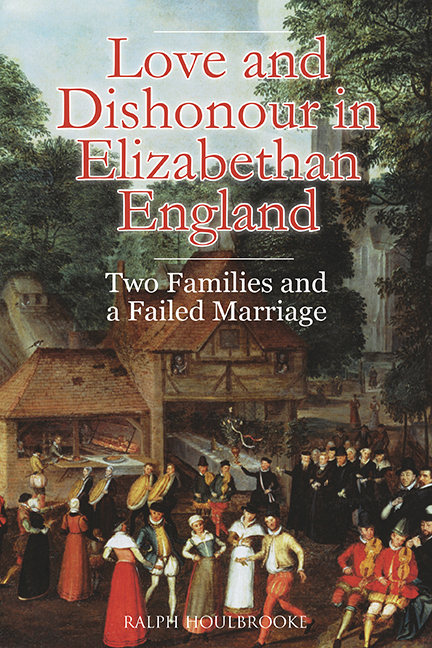Book contents
- Frontmatter
- Dedication
- Contents
- List of Illustrations
- Preface and Acknowledgements
- Notes on the Spelling of Names, Dates, and Currency
- List of Abbreviations
- map
- Miscellaneous Frontmatter
- Introduction
- Part I Two Families
- 1 The Jerninghams: Land, Court, and Catholicism
- 2 ‘A Very Lose Dealer’: The Downfall of John Jerningham of Somerleyton
- 3 The Forths: From Clothiers to Landed Gentry
- Part II An Unfortunate Marriage
- Part III Afterwards
- Bibliography
- Index
1 - The Jerninghams: Land, Court, and Catholicism
from Part I - Two Families
Published online by Cambridge University Press: 13 July 2019
- Frontmatter
- Dedication
- Contents
- List of Illustrations
- Preface and Acknowledgements
- Notes on the Spelling of Names, Dates, and Currency
- List of Abbreviations
- map
- Miscellaneous Frontmatter
- Introduction
- Part I Two Families
- 1 The Jerninghams: Land, Court, and Catholicism
- 2 ‘A Very Lose Dealer’: The Downfall of John Jerningham of Somerleyton
- 3 The Forths: From Clothiers to Landed Gentry
- Part II An Unfortunate Marriage
- Part III Afterwards
- Bibliography
- Index
Summary
The Jerninghams or Jernegans were one of Suffolk's older gentry dynasties. According to a family origin myth cautiously repeated by the seventeenth-century antiquary John Weever, King Canute had first brought their ancestors from Denmark to settle in England in 1030. They were certainly established in the county by the late twelfth century. Sir Peter Jernegan inherited the manor of Somerleyton in Lothingland through his mother c. 1310–11. It then became the family's ‘capital seat’. In 1314 Sir Peter was granted the patronage of the Augustinian priory of St Olave in the neighbouring parish of Herringfleet. St Olave's became the Jerninghams’ favoured place of burial. The tomb of Sir Peter's descendant Sir Thomas was said to have borne the inscription
Jesu Christ, both God and man
Save thy servant Jernegan.
Lothingland, in the far north-eastern corner of Suffolk, is effec¬tively an island, bounded to the west and north by two rivers – the Waveney and the Yare – to the east by the North Sea, and to the south by the long inlet of Lake Lothing and Oulton Broad, which the Oulton Dyke links to the Waveney. Extensive marshes fringed the rivers on the landward side on one or both banks, while sand banks created a hazard for those attempting to land from the sea. Lothingland was easily defensible both from sea and land, as the authors of a report of 1584 pointed out. In Elizabeth I's reign, only four bridges gave access to it. Parts of the island probably seemed somewhat sequestered, especially during inclement winter weather. Yet, as the 1584 report also observed, it was ‘verie fertile’, and yielded ‘stoare of Corn Cattall and other victuall’. In its south-east¬ern corner lay Lowestoft, a port and market town with a population of around 1,500, which benefited from both fishing and seaborne trade. There was a long-established rivalry between Lowestoft and the port of Yarmouth across the Yare. That rivalry, together with Lothingland's insular position, made it, in the words of the fore¬most historian of Tudor Suffolk, ‘an ideal place for piracy and clan¬destine activities’.
Under the early Tudor kings, the Jerningham family enhanced its wealth and standing through advantageous marriages and royal favour. Edward Jerningham (d. 1515) first married Margaret, daughter of Sir Edmund Bedingfield. Sir Edmund's ancestors had lived at Bedingfield, near Eye in Suffolk.
- Type
- Chapter
- Information
- Love and Dishonour in Elizabethan EnglandTwo Families and a Failed Marriage, pp. 21 - 50Publisher: Boydell & BrewerPrint publication year: 2018

